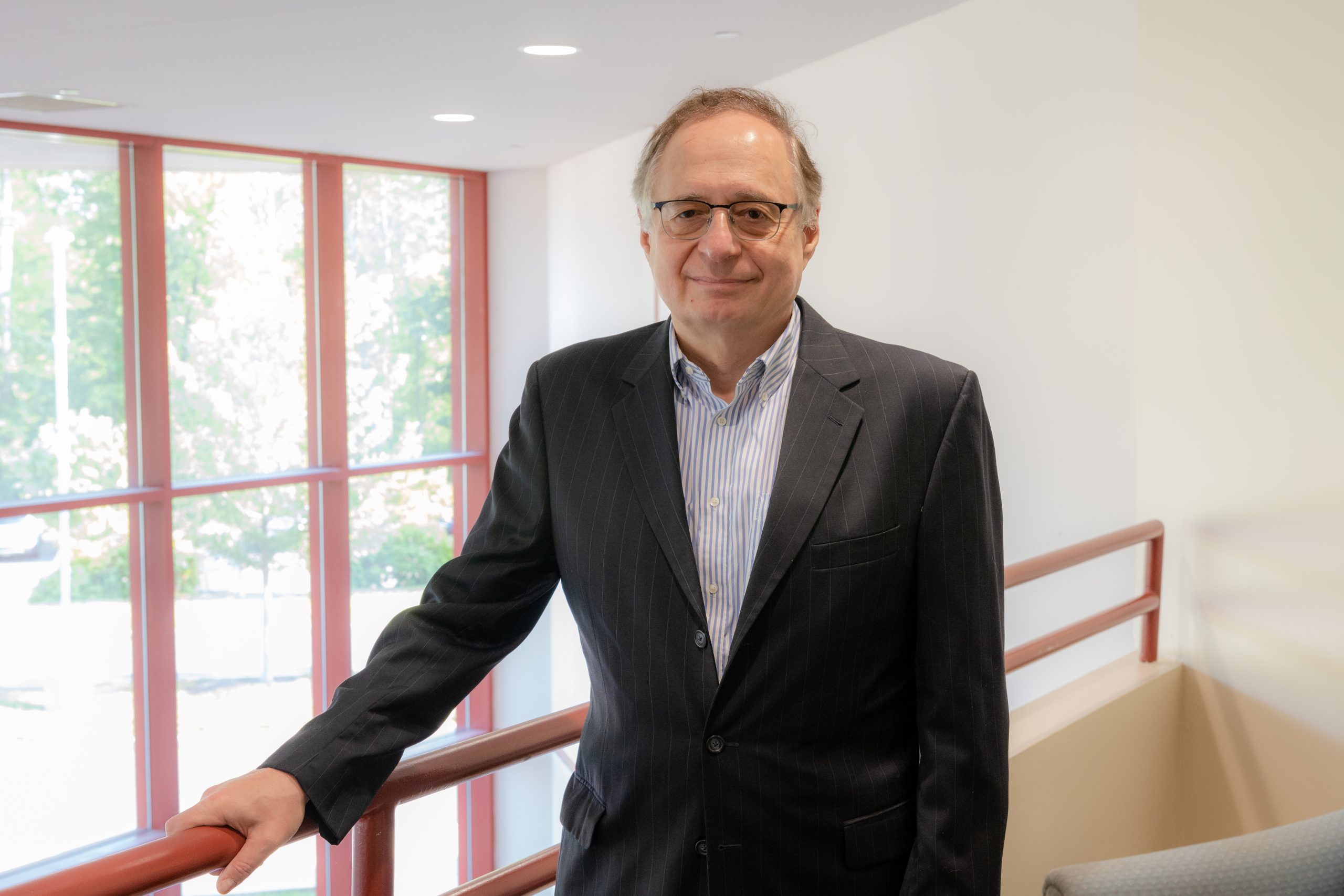This semester, Tracy Frank, a geologist and geochemist, became the second department head of the Department of Geosciences since its founding two years ago. Prior to that, the department was a research institute bringing together researchers from across the University.
After traveling to diverse climates like Antarctica and Australia, and working as an adjunct professor in Earth and atmospheric sciences at the University of Nebraska-Lincoln, Frank joined UConn this year as a department head and professor of the geosciences program.
Now, she shares what studying ancient climates can teach modern humans about our impact on the environment, and the future of climate change.
What is geoscience, and what do geoscientists do?
It is a discipline that draws from the other sciences to study the planet. You can combine it with chemistry like me, or with physics to study geophysics, the internal structures of the earth, or you can combine it with biology to study paleontology.
There are a number of different things geoscientists work on. The geosciences have gotten a bit of a bad rap because many people associate it with only working in oil and gas. In fact, geoscientists study a broad range of topics, such as climate change, energy security, natural resources and sustainability, water availability, and preventing natural hazards that geoscientists work on. Geoscientists work in a wide range of settings. Some spend a lot of time outside, or travelling. It’s a great career if you’re into travelling.
Additionally, some work in cities, in businesses, or in laboratory settings, while some design complex software that can model climate or image the subsurface of the earth in 3D. There are many things we do, ranging from field work to high-tech stuff.
Tell us about your research as a geoscientist.
Most people are familiar with the catastrophic asteroid event that wiped out the dinosaurs around 66 million years ago. Fewer people may know about another mass extinction caused by volcanoes spewing carbon dioxide into the Earth’s atmosphere. This event, known as the end-Permian extinction, wiped out 90 percent of life in the oceans and 70 percent on land.
If we can look back at history and see what the extremes are of the Earth’s system, what causes the planet to tilt from one extreme to the other, we can better predict what might be in our future.
I study the sedimentary record to try and understand earth’s surface environment and climates of the deep past –billions of years ago—and how they change over time. I’m particularly interested in understanding the consequences of major catastrophes in the Earth’s history, such as mass extinctions that led to major loss of life, and how these mass extinctions coincide with rapid climate change and spikes in greenhouse gases.
My students and I go to field sites all over the world and study samples of the rocks that preserve a record of particular events. Then we use our lab to generate geochemical profiles – we use stable isotopes and elemental analyses, and they can give us signals that help us reconstruct what happened.
How do you see geosciences being important over the next 10 years?
The geosciences have always been important, because they are critical to supplying us with natural resources and also understanding how the planet we live on operates. Geologists were the first climate scientists, the first to realize that Earth’s climate has changed through time, with several major climate catastrophes recorded in the rock record.
Geosciences, taught with an Earth system perspective that draws on other core STEM disciplines, is increasingly important as humanity faces critical issues related to climate change. It is also critical that non-scientists have a better understanding of how the earth operates.
One way of improving understanding is through education on the impacts that human activities have on the planet, and the significance for society. For example, the department recently introduced a new 1000-level course called “The Human Epoch: Living in the Anthropocene,” which focuses on human activities as agents of geologic change and resulting effects such as climate change, sustainability, mass extinction, land use, and waste disposal. This step towards teaching Earth processes in the context of the human epoch is a unique approach, and one that is needed to attract and prepare the geoscientists of tomorrow.
How are geoscientists uniquely equipped to work on climate change and the environment?
Geoscientists consider the earth as a system, controlled by interactions between the hydrosphere, lithosphere (solid earth), biosphere, and the atmosphere. We approach such problems by testing hypotheses against observations of the natural world, often comparing modern processes with those recorded in the rock record. Geoscientists understand the interconnectedness of the different components of the Earth’s systems and how sensitive they are to perturbations. Any perturbation to one component of the system will have effects on the others. For example, a major driver of climate change today is related to extraction of fossil fuels, formed over millennia and then stored in the subsurface for millions of years, and their rapid release into the atmosphere as greenhouse gases.
What core scientific skills do students gain studying geosciences?
Students receive an in-depth education about the components of the Earth system and how they are interconnected, drawing on an array of scientific skills tied to different STEM fields. Understanding the rock record can inform us about how the Earth has changed through time, how quickly those changes have occurred, and why, is fundamental.
Many geoscientists do field work, exploring for certain resources, creating maps of the underlying bedrock, or studying outcrops to learn what they can tell us about past environments and life on earth. Many others work in laboratories as geochemists or geophysicists. Some are paleontologists. Others create or use complex computer software to model components of the earth system, such as climate, or to image the subsurface.
The Geosciences Department aims to produce students who can think critically and creatively in ways that will help them to adapt and apply their knowledge to solve future problems.



